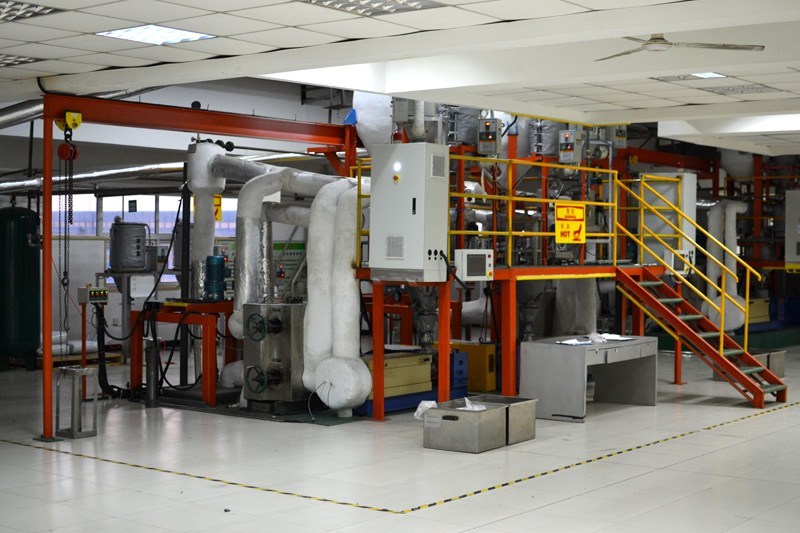e.dye® Opens Innovation Center to Present the Waterless Color System™ to global brands.

Dosing Masterbatch
In response to increased interest in the Waterless Color System™ from global apparel brands, e.dye® has opened an Innovation Center in Kunshan, China. Located 90 minutes from Shanghai, the 160,000 square foot three-story Innovation Center includes management offices, test lab and pilot factory.

Drying the Masterbatch with a view of Kunshan
The e.dye® Waterless Color System™ uses a proven process known as solution dyeing. By adding the color before the polymers are extruded, the color is inside the yarn. Since the color is inside the yard in contrast to outside the yarn with traditional water-dye process, the color is permanent. The colors won’t fade or bleed on to adjacent colors.

Some Hi-Vis yarns fresh from the spinner
The e.dye® Innovation Center has created detailed formulas for more than 5,000 vibrant colors. “The master batch colors are mathematically derived pigment and dyestuff formulas. We can produce the exact color time after time – from color approvals, to prototypes, through salesman samples and from one bulk order to the next,” says Michael Murphy, sales & marketing, e.dye® Waterless Color System™.

Just one of our beautiful extruder machines
Using sophisticated mathematical formulas to define colors, e.dye® offers an unmatched ability to produce consistent dyed yarns season after season. “If we want to match a color, we aren’t just comparing two colors and adjusting our recipe, we are using software to call up a specific colorant Masterbatch, extruding the filaments, and making the yarn exactly the same, every time,” says Murphy.

Recycled Raw Material
Working closely with brand managers and product designers at the Innovation Center, e.dye® can document the benefits of the Waterless Color System™. “Our Datacolor analysis can show a color developer or designer exactly how different denier and filaments, weaves and knits, reflect light. We provide physical samples for visual reference along with Datacolor digital analysis. Typically we provide a curve that is an acceptable color match within tolerance in the L*a*b* color space for hue and slightly different along the L* axis (light/dark). We call this Color Harmony™.”
